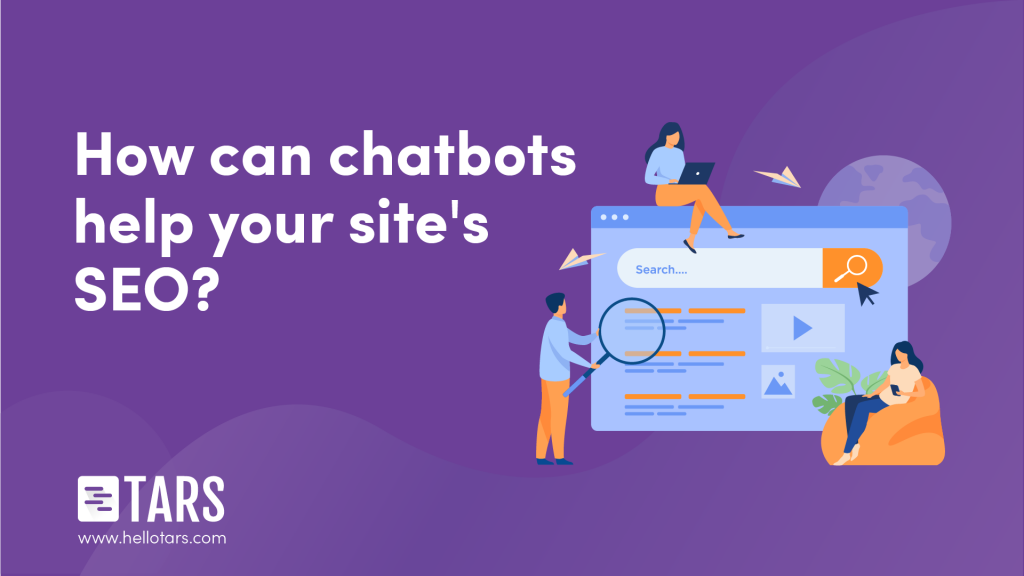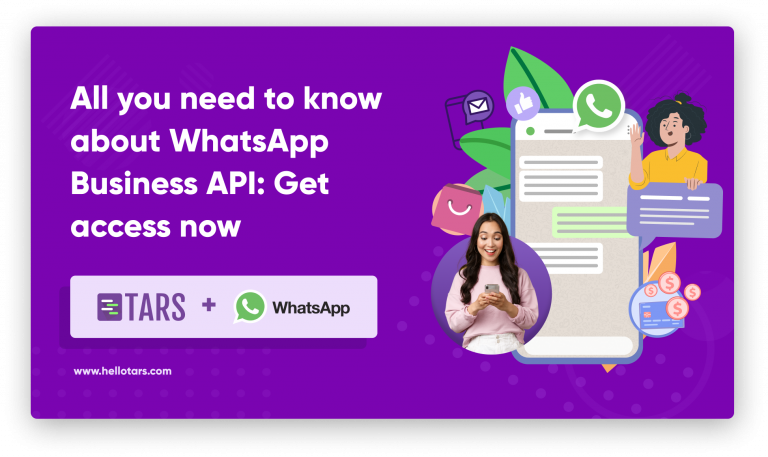How Chatbots Can Help Your Site’s SEO?

Chatbots promise an interactive experience for your landing page visitors. But can they help your site’s SEO as well?
In this article, you’ll discover the three ways chatbots help your website’s performance in search engines. I’ll also share three aspects that you need to be careful about from anSEO perspective while employing chatbots on your website. Let’s begin with an introduction to a few engagement metrics that we’ll refer to later.
Important SEO Metrics
From an SEO perspective, here are some metrics which are relevant to our discussion right now. Many SEO professionals and content marketers use them interchangeably.
1. Time on page – The amount of time users spend on a page once they land on it from the search engine results page (SERP). Google Analytics (GA) measures this by next-page hits sent to the GA server. The next page could be on your site, back to SERP, or anywhere else.
2. Bounce rate – It indicates the number of single-page sessions on your site before people bounced back to SERPs. The metric doesn’t differentiate between a user spending 3 seconds on your site vs. the one spending 3 minutes — it’s merely an indication of how much percentage of users visit a single page on your website.
3. Dwell time – This is the time spent by a person between clicking on a site to landing back to the SERPs.
GA doesn’t show the third metric, but the other two are available for any page with us:
Now, none of these metrics are confirmed as ranking factors by Google, but experts say they might “feed their machine learning.” The company has also filed a patent to measure “website duration performance” which measures the time elapsed between a search engine user visiting a website to another one.
So they could be indirect ranking factors because a higher amount of time spent on your website — as measured through the above three engagement related metrics — indicates higher content quality and user satisfaction.
Chris Prasad, the founder of JookSMS, echoes a similar sentiment, “The longer a visitor stays on a page, it sends a signal to Google that the website probably provided the information the user was looking for with their initial search query. So they may rank the page higher for the keyword.”
A caveat for specific kinds of search queries: When you’re comparison shopping, you’ll be hopping across websites leading to a shorter engagement. So a lower time on page and dwell time are warranted for such queries.
In the next section, let’s look at the first advantage of using chatbots from the SEO perspective.
Offering A Personalized Experience
Chatbots could tailor deals, product recommendations, and other messages for a new website visitor based on their input data and the pages they are navigating. They can also serve relevant content to meet the needs of the visitors timely.
Such personalized messaging now interests 72% of consumers as per SmarterHQ. Further, it’s one of the top reasons people are willing to share their data:
For instance, on your product landing pages, you can create a flow around the frequently asked questions about the product.
If your visitors are about to abandon a cart, you can offer proactive support through a chatbot to help them proceed to payments or resolve other issues they get stuck with. If they are reading a case study related to your product, the chatbot could prompt them to sign up for a free demo. On other site pages as well, the chatbot could tailor message flows relevant to their content.
A personalized experience makes users happy. This might seem like something search engine bots can’t decipher. However, if a visitor feels happy with their shopping experience on your website:
- they are more likely to spend more time with your brand and read content on your site, thereby increasing your average time on page,
- they might review it on Google or other third-party sites like Yelp. The star ratings and user-generated content improve your brand’s perception in the eyes of your prospective customers and sends positive signals to Google, also helping your local search visibility.
See the indirect correlation of personalized experience with SEO?
Deliver An Interactive Experience (And Higher Engagement…)
YouTube trends report for 2020 shared a dire need for social connection in the world — and how interactive audience experiences were an integral content format for numerous creators.
In the sea of static content, chatbots can add a dynamic “human” touch to your website. When integrated in a contextually relevant manner, they make for a seamless and interactive experience. You can create an even more engaging experience by using GIFs and rich media.
For instance, on a software review roundup of podcast hosting platforms, you can create a quiz for your visitors. The questions could center around budget, use case, functionality, and the like to help them decide the ideal fit podcast host for their individual needs.
Such a quiz gives you more information about your audience for future marketing campaigns, engages a visitor to spend more time on your site, and effectively serves the search intent.
You can even create educational chatbots that let you offer personalized teaching. Just look at this example of a chatbot explaining Bitcoin:
Beginner-level blog posts on the basics of an industry are an ideal fit for such bots. They would engage your users for a longer time.
When done well, chatbots also give a community feel to your new visitors. For instance, SHEROES used TARS to add a touch of empathy in their website interactions. Again, such a branded experience indirectly helps your SEO efforts.
Driving Visitors Deeper Into Your Website
Chatbots engage new visitors by providing relevant content to meet their needs. They also help your users navigate your site smoothly.
For instance, TARS has integrated a conversion rate case study in its chatbot flow that appears on all their blog posts. This gets prospects who are interested in chatbots to explore new related content about using them for their business.
Such reading suggestions may not serve as internal links that help search engine bots crawl your pages. But they do get your visitors deeper into your website and discover new pages — possibly snowballing into more social shares and backlinks for your content.
Indeed you can use chatbots to drive people to your “money pages” where conversions happen. Once a web page begins getting some traction and people spend time on it, Google might rely on the engagement metrics to rank the page for relevant search terms.
Visitors spending more time to get value from your content and site are also more likely to convert into subscribers and customers. See how chatbots could function as a non-intrusive yet engaging way to drive people from the top of the funnel to the middle and bottom?
Three Aspects Your Chatbot Should Obey For Stellar SEO
While the personalized experience from chatbots could be a great addition to your site, take care of the factors below to ensure that it doesn’t hurt your SEO (yes, that could also happen!)
Replace Chatbots With Forms Only Where It Makes Sense
Peep Laja, the founder of ConversionXL, recently shared how he detested chatbots on LinkedIn. Many marketers joined him to share the hatred.
Broadly, their reasonings were:
- Chatbots take more time to complete than a form,
- You don’t get to see the number of fields simultaneously and are taken by surprise until you type the last piece of information,
- They try to mimic a “human” conversation by using ellipses (…) and fail at it.
The above pointers shared by Laja and co. indicate something you should pay special attention to while implementing them: Don’t force every landing page and form on your site into a chatbot.
Shreya Dalela, B2C content marketer and the founder of The Creatives Hour, shares a couple of interesting pointers to nail down when using a chatbot might make sense, “Get feedback from your audience to find out if they prefer real-time conversations — if so then, consider human customer support. Also, test your message delays in chat to find what has the highest impact.”
I would recommend experimentation with the other parameters of your bot as well on the top of these.
If a frustrated user meets with a bad bot experience on your site, they will not want to buy from you — forget it negatively affecting your SEO.
Site Speed
The loading speed of a webpage is an important metric related to the user experience. It’s become a part of the page experience update that will play a vital role in search rankings starting middle of 2021.
If adding a chatbot adds latency to your page, you’ll find users dropping off from your site and perhaps even a drop in your search rankings.
So ensure that your chatbot is asynchronously routed from external servers. To check if your chatbot script is causing issues, plug your site inside Google Pagespeed Insights. If the script pops up, you might need to work on compressing it or delaying the chat widget load.
Alternatively, you can use an out-of-the-box solution like TARS without programming at all. Always ensure that you use only a reasonable amount of rich media (GIFs, memes, visuals, and the like) in your chatbot so that your page loading speed isn’t majorly affected.
Mobile Experience
A chatbot can make for a bad user experience on the smaller screen — if it masks your entire site’s content. So avoid abrupt chatbot popups. Their placement shouldn’t hurt your website’s navigation and accessibility.
If your bounce rate shoots up or session time goes down after implementing a chatbot, then diagnose its implementation. They are indicators of bad user experience.
You can consider letting chatbots occupy the complete screen to get back precious mobile screen estate while ensuring a top-notch mobile experience for your visitors. Arnav shares this case study here.
Remember, mobile incompatibility can significantly affect your search engine performance, given that Google relies on mobile-first indexing.
Final Thoughts
Chatbots are a robust tool to engage your visitors, collect valuable user data, and personalize their experience. As they offer a real-time experience, having them appear in a context-specific and timely manner could help you win over your visitors, getting them to spend more time on your site.
As you saw in the article, chatbots will have an indirect impact on your SEO as well. So they are worth testing for your brand. Just ensure you don’t force their implementation where there’s little utility for them. Also, ensure they are mobile-friendly and don’t affect the loading speed of your site significantly.
How have chatbots helped your site’s SEO? Let me know in the comments below.
Chintan specializes in content marketing for SaaS businesses. He also helps creators build sustainable businesses from their crafts at Elite Content Marketer.
- Important SEO Metrics
- Offering A Personalized Experience
- Deliver An Interactive Experience (And Higher Engagement…)
- Driving Visitors Deeper Into Your Website
- Three Aspects Your Chatbot Should Obey For Stellar SEO
- Replace Chatbots With Forms Only Where It Makes Sense
- Site Speed
- Mobile Experience
- Final Thoughts


Build innovative AI Agents that deliver results
Get started for freeRecommended Reading: Check Out Our Favorite Blog Posts!

Why CSMs Are Vital For Chatbot Marketing

Making Your SEO Count

All You Need To Know About WhatsApp Business API: Get Access Now

Our journey in a few numbers
With Tars you can build Conversational AI Agents that truly understand your needs and create intelligent conversations.
years in the conversational AI space
global brands have worked with us
customer conversations automated
countries with deployed AI Agents



